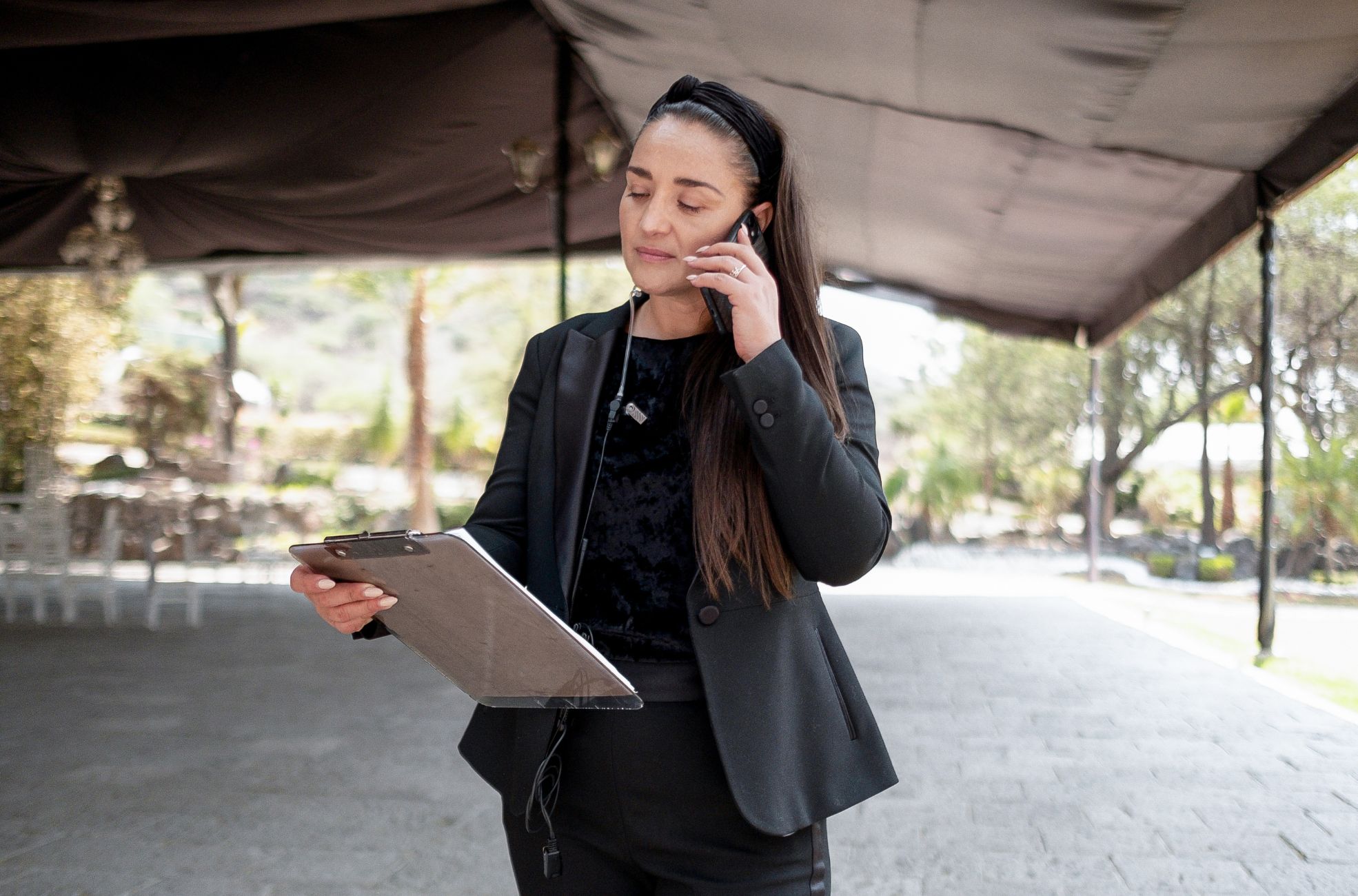An event agenda is more than just a list of activities; it’s the backbone of any successful event, providing structure and guiding the overall experience for attendees. With thorough planning and attention to detail, the agenda sets the stage for a seamless and memorable event that resonates with every participant.
Crafting an event agenda that balances engaging content with interactive opportunities is a delicate art that requires an in-depth understanding of the audience’s expectations and the event’s strategic goals. From establishing a clear vision to leveraging the latest technology, each step in the planning process contributes to creating an impactful and efficient agenda.
We examine the intricacies of designing an event agenda that captivates your audience and aligns perfectly with your event’s objectives, ensuring every moment is purposeful, and every detail is anticipated.
Setting a Clear Vision for Your Event
Crafting the perfect event agenda starts with a clear vision. This vision acts as the compass for all your planning decisions, ensuring every element of the event aligns with your intended goals and resonates with the audience.
It’s the foundation upon which you build a memorable and impactful event.
Establishing a Compelling Theme
A theme isn’t just an aesthetic choice; it’s a strategic tool that encapsulates the message of your event. Like the framework of a house, a theme provides structure and guides the overall design and experience.
You’ll want to select a theme that resonates with the event’s purpose and the attendees’ expectations. This theme should be woven into every aspect of the event, from the decor and food to the music and gift bags, creating a cohesive and immersive experience.
The theme is often encapsulated in a tagline—a succinct sentence that conveys the event’s core message. This tagline should be a touchstone throughout the planning process, keeping all elements cohesive and reinforcing the key message.
Additionally, creating a logo that visually represents the theme can speak volumes. An image can convey complex ideas quickly and effectively.
Outlining Specific Outcomes
To ensure the success of an event, you need to set specific and measurable goals. These goals should align with your brand’s marketing strategy and the company’s mission statement. By employing SMART criteria—specific, measurable, attainable, realistic, and time-based—you can establish clear objectives that guide your planning process.
Objectives are the strategies and steps that you take to reach your goals. By focusing on what you can control, you can create a roadmap for a successful event.
Mapping Attendee Journey
The attendee journey is a dynamic roadmap that personalises the event experience, ensuring that each participant feels engaged and valued. This journey begins with the initial interaction and continues through to the final farewell.
Each touchpoint is designed to leave a lasting impression. By mapping out the attendee journey, you can create event advocates and champions who will continue engaging with your brand long after the event.
This journey map acts as a guiding light, ensuring that your goals, actions, and events are all aligned. It’s a collection of strategies that ignite captivating experiences and cultivate a dedicated community.
By understanding the nuances of the attendee journey, you can tailor the event to meet each participant’s needs and expectations, creating a truly personalised and memorable experience.

Designing a Dynamic Event Flow
An event agenda that captivates and maintains attendees’ attention requires careful timing and harmony of its elements. The challenge is finding the right balance between delivering substantive content and fostering interactive engagement.
Balancing Content and Interaction
Achieving a balance between content and interaction is essential. To do this, you’ll need to understand your audience’s expectations, needs, and the value they seek from the event. This understanding can be obtained through research, surveys, or interviews, which can then guide the creation of tailored tracks or sessions that resonate with different audience segments.
A variety of session formats, such as keynote speeches, panel discussions, workshops, and networking opportunities, offer unique benefits in terms of depth and engagement. The key is to select and blend these formats to meet the event’s objectives and the audience’s preferences. Additionally, the timing of these sessions is imperative; you must consider the event’s duration, session lengths, and the scheduling of breaks to keep the pace dynamic and prevent audience fatigue.
To ensure the agenda’s effectiveness, conducting a trial run and using real-time engagement tools such as polls and surveys is advisable. This approach allows for on-the-spot adjustments and provides valuable insights for future events.
Scheduling Interactive Workshops
Interactive workshops are powerful tools for stimulating creative thinking and collaborative problem-solving. Whether conducted in person or online, these workshops require detailed planning, from selecting participants to preparing activities and resources. They typically span several hours and require a clear agenda to guide the proceedings.
The success of a workshop depends on engagement, which can be initiated with ice-breaker activities and sustained through well-chosen exercises that align with the workshop’s objectives. Using gamification and breakout rooms can further enhance engagement, providing a more enjoyable and impactful learning experience.
When planning workshops, software and tools are a must, as they can significantly influence the activities, program, and overall engagement. The right technology can facilitate a seamless and interactive experience through NFC-enabled badges, mobile event apps, or live polling.
Incorporating Diverse Session Formats
To cater to attendees’ varied interests and learning preferences, it’s essential to include a multitude of session formats in the event agenda. This diversity can range from inspirational keynotes and expert panels to hands-on sessions and informal networking gatherings. Each format serves a distinct purpose, from setting the event’s tone to fostering deep discussions and skill development.
Innovative formats such as fireside chats, campfire sessions, and world cafés can create intimate and interactive environments that encourage dialogue and connection among attendees. Fast-paced presentation styles like Pecha Kucha and Lightning Talks allow for a rapid exchange of ideas, while formats such as Fishbowl and Birds of a Feather facilitate open discussions among like-minded individuals.
Including live polling and debates can also enrich the agenda, providing opportunities for attendees to participate and engage with the content actively. By offering a variety of topics and formats, the event agenda becomes a narrative that captivates the audience and ensures a memorable and effective event.

Curating a Stellar Line-up
Sourcing Influential Industry Leaders
Identifying the right speakers is critical to the success of your event. Look for individuals who are recognised for their knowledge and have made significant contributions to their field. These experts often have a notable online presence, which reflect their influence and reach.
They may also command a significant following on various social media platforms, indicating their role as thought leaders who provide valuable insights to their audience.
Consider the professional background of your potential speakers as well. Those who have served as judges, speakers, or authors bring added value. Their past roles are evaluated based on their impact on the industry.
For instance, having served as a judge at renowned events, delivered keynote addresses at major conferences, or written impactful publications can contribute additional points to their overall score, showcasing their authority and credibility.
Aligning Speaker Topics with Event Goals
Selecting speakers should directly correspond with the event’s objectives. Each speaker’s area of expertise should reflect the event’s theme, ensuring the content is pertinent and captivating for the audience.
For example, a speaker with a background in event marketing might offer insights on sponsorship strategies. At the same time, a tech innovator could discuss new developments in event apps and audience engagement tools. You can create a unified and inspiring agenda that educates and motivates attendees by aligning speaker topics with the event’s aims.
Providing Detailed Briefings and Resources
To facilitate outstanding presentations, it is essential to provide speakers with comprehensive briefings and resources. This includes information about the event’s audience, the intended impact of their talk, and any specific themes or questions to address. Equipping speakers with this information allows them to tailor their presentations to the interests and requirements of the attendees, leading to a more effective and memorable experience.
Offering resources such as previous event data, audience demographics, and industry trends can assist speakers in fine-tuning their content to the event’s context. This level of preparation enhances the quality of each session and demonstrates the organiser’s commitment to delivering value to both speakers and the audience.

Maximising the Use of Technology
Embracing digital advancements is pivotal in enhancing the event experience for organisers and participants. Strategically implementing technology can lead to more engaging, efficient, and insightful gatherings.
Leveraging Virtual and Hybrid Platforms
The evolution of events has introduced virtual and hybrid platforms, which offer dynamic spaces for hosting online gatherings. These platforms come equipped with features that facilitate interaction and networking opportunities akin to those found at in-person events.
They are versatile, accommodating a wide array of events, and can manage different sizes and complexities. When choosing a virtual event platform, it’s important to match its capabilities with the unique requirements of your event.
Selecting the right platform involves evaluating its ability to connect participants across distances, captivate a worldwide audience, and enable meaningful exchanges. It should also offer immersive experiences and capture attendee data for subsequent analysis.
To select an appropriate platform, first outline your objectives and your audience’s needs. Then, consider essential features such as branding, registration, agenda management, personalisation, content delivery, video functionality, networking capabilities, and virtual exhibition spaces.
Evaluate each platform’s usability, scalability, device compatibility, analytical tools, security protocols, customer support, and cost. A poorly chosen platform can negatively affect your brand, so it’s important to make a selection that contributes positively to your event’s success.
Enhancing Engagement with Interactive Tools
Interactive tools are crucial for fostering an engaging atmosphere at events. They create opportunities for participants to interact with the content and with one another. Tools like live polling enable the collection of immediate feedback and facilitate real-time content adjustments to align with audience interests.
Incorporating gamification elements such as quizzes, raffles, and Q&A sessions can transform presentations into dynamic experiences. Networking features are equally important, allowing participants to connect with sponsors and speakers through various formats.
Interactive slides can deepen attendees’ engagement with the content. At the same time, social media walls can amplify relevant discussions, building a sense of community among participants.
By integrating these tools, you can boost participation, enhance retention, and collect valuable feedback. These tools make the event more interactive and contribute to its longevity.
Utilising Data Analytics for Real-time Insights
Data analytics offers immediate insights into event performance and participant behaviour. By examining online registrations, website traffic, and social media interactions, you can more thoroughly understand attendee preferences.
Predictive analytics can forecast trends and potential obstacles, empowering you to make strategic decisions. Data analytics also plays a pivotal role in assessing the ROI of an event, evaluating the efficacy of marketing initiatives and the overall influence of the event.
Post-event analysis is an essential component of a data-driven event planning process. It provides feedback for refining subsequent events. By leveraging data analytics to optimise marketing efforts, you can support the achievement of your event’s objectives, ensuring continuous improvement.

Perfecting and Sharing Your Agenda
A well-structured agenda manages time effectively by allocating specific slots to each activity. It enhances attendee engagement by offering a variety of topics and interactive sessions.
Conducting a Comprehensive Run-through
Before you finalise your agenda, conducting a thorough run-through is essential. This process involves establishing a clear timeline for planning, which varies depending on the event’s scale. A few weeks of preparation may suffice for intimate gatherings, while larger events or trade shows require several months.
During this period, you’ll need to set your budget, secure a venue, and engage with potential speakers, performers, or caterers. As the event approaches, you’ll intensify marketing efforts, confirm travel and accommodation for speakers, and finalise details with the venue and caterers. This timeline should be tailored to the unique requirements of your event.
A comprehensive run sheet also means confirming the sequence of sessions, presentations, and activities. Ensure each participant has a specified start and end time to help them manage their time. It’s also the perfect opportunity to plan for space transitions between sessions and to consider the impact of local events that might coincide with yours.
Strategising Pre-Event Communication
Effectively communicating the event agenda to attendees is key. It sets expectations, generates excitement, and provides all the necessary information, including session topics, timings, and locations.
You should share the agenda well in advance, allowing speakers and presenters to prepare and attendees to organise their schedules. This can be done through various channels, such as event websites, emails, or mobile apps. With the advent of event technology, updates to the agenda can be automatically reflected across all platforms, ensuring that attendees have access to the most current information.
Planning for Flexibility and Backup Options
While an agenda provides structure, it must also allow for flexibility. Unforeseen changes are bound to happen, and having a clear agenda makes it easier to communicate adjustments to attendees, maintaining the event’s flow.
This could involve having backup speakers or alternative activities ready to fill any gaps that might occur. Additionally, consider the environmental impact of your event materials. Swapping printed programs for digital options reduces waste. It allows for real-time updates, ensuring attendees always have the latest agenda at their fingertips.
Wrapping Up the Agenda With Precision
Crafting the perfect event agenda is akin to conducting a symphony, where every section harmonises to deliver a masterpiece. The crescendo of a successful event relies on the precise balance of vision, themes, content, interactivity, speaker brilliance, technology, and timing. With guidance, you’re equipped to orchestrate an agenda that meets and exceeds expectations, striking the right chord with every participant.
Remember, attention to detail, and flexibility are the conductors’ batons—use them to keep the rhythm of your event lively and adaptive to any spontaneous shifts. Your meticulously planned and shared agenda promises an enlightening and engaging experience, setting the stage for your event’s standing ovation.







